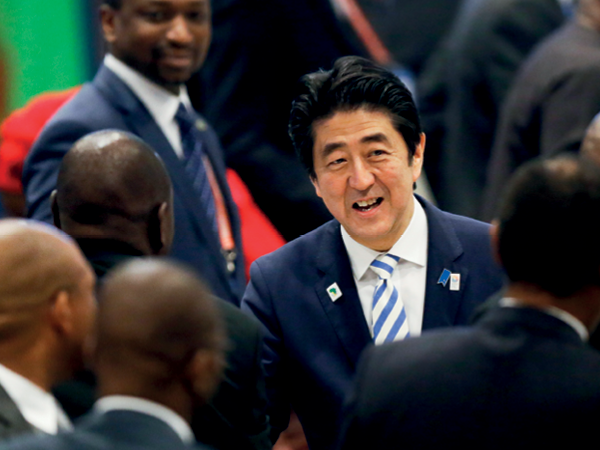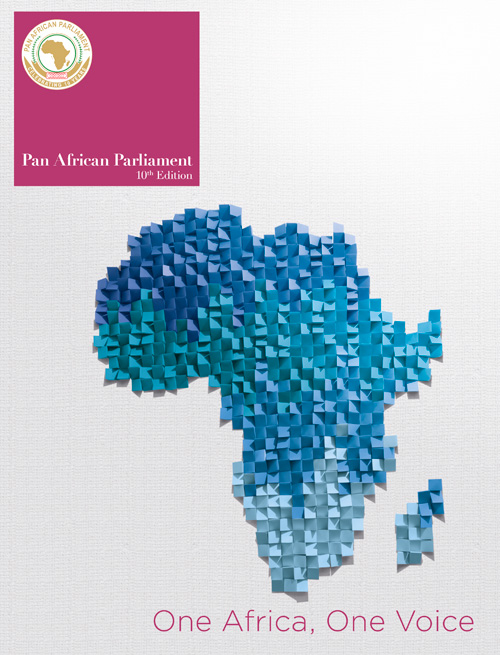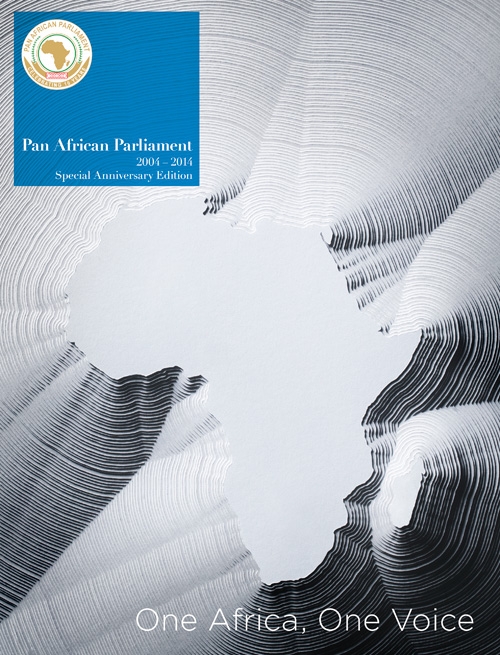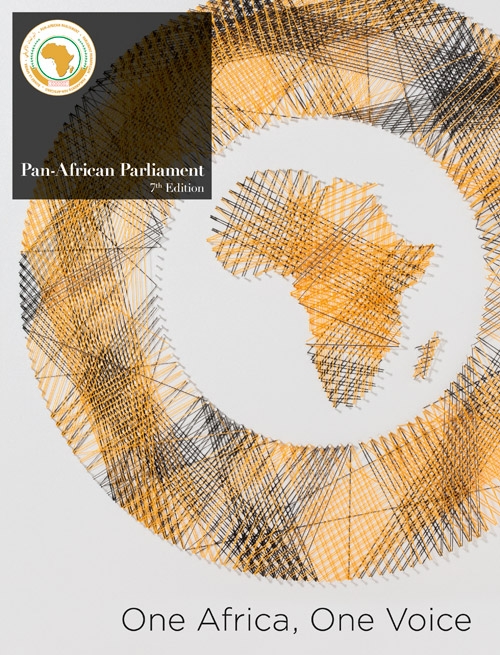
The fifth Tokyo International Conference on African Development (TICAD V) was held from 1 to 3 June 2013 in Yokohama, Japan. On the invitation of the government of Japan, the third Vice-President of the PAP, Hon Loide Kasingo attended, accompanied by Hon Dikgang Makgalemele and Hon Nurudeen Abatemi-Usman.
This PAP delegation joined the conference’s 3 000 participants, which included 29 Heads of State and governments from Africa and Asia, international organisations, donor countries, the private sector and NGOs. TICAD V was organised by Japan, the UN, the World Bank and the AU Commission with a major focus on how to expand business within Africa.
Background
The first TICAD conference was held in 1993 to develop co-operation between Japan and Africa, and in the 20 years since, the African economy has rapidly grown. By 2013, the African annual growth rate had surpassed 5% (UNDP 2013) and trading volume had quadrupled on natural resources price hikes. In 2007, foreign direct investment into Africa surpassed official development aid. Africa was now full of opportunities and considered an economic frontier for Asia.
Despite this growth, the continent still faced challenges including income inequality, over-reliance on natural resource trading, infectious diseases, political instability and recurring conflicts. Various Heads of African States indicated at the conference that international support was still essential to tackling these problems.
TICAD V
At the fifth conference, the Japanese government showed how the pledges they had made at TICAD IV, including doubling Japan’s official development assistance (ODA) for Africa to US$1.8 billion and doubling Japan’s invest-ment in the continent to US$3.4 billion, had been achieved by 2012. In fact, Japan’s investment in Africa was already US$6.2 billion by the end of 2011.
The conference revealed Japan’s high expectation of Africa. They saw the continent’s economic growth as beneficial to the unstable global economy, and by 2013, Japan saw Africa as not only an aid recipient, but also a consumer market and a destination of direct investment as a growth area.
Most African leads, in turn, indicated interest in expanding the business of importing high quality goods from Japan, while Japanese companies indicated a strong interest in African businesses.
At TICAD V, Japan pledged US$32 billion to Africa in both public and private support, including ODA of US$14 billion. Japan also announced it would underwrite a maximum of US$2 billion of trade insurance.
The aim of the conference was to discuss how to turn Africa’s economic growth into global growth. To achieve this, TICAD V focused specifically on three themes: robust and sustainable economy; inclusive and resilient society; and peace and stability. From this, an action plan was collated. The conference also discussed how to build infrastructure as well as how to train people to promote direct investment from the private sector.
Areas identified for support
Key areas were identified by several African leaders as possible opportunities for Japanese support.
The industrialisation of raw materials products: Africa is resource-rich but tends to export raw materials and import finished products. The development of industries to process raw materials into exportable value-added products is a major challenge. But the opportunity is enormous, as it would support the growth of African economies while creating a demand for a skilled African workforce. Inward investment was the major key.
The creation of a free-trade area: Currently Africa is divided into 54 countries and eight regional economic communities that overlap. At the time of the conference, SADC was in negotiation with the East Africa Community and Common Market for Eastern and Southern Africa to create a common free-trade area. Once this is in place by 2017, there is the potential of a free-trade area with a population of 540 million and a combined GDP of around US$660 billion.
Japan pledged Africa US$32 billion in public and private support
Improved infrastructure: To develop value-added industries, Africa needs support to build roads, railways, ports and communications systems. It must also find a way to ensure a stable supply of electricity to power the industries that will manufacture value-added goods.
Upgraded business environment. On the whole, Japanese companies expect to expand their business activities in Africa, but many of them feel Africa needs to do more to improve the business environment.
Recommendations
Following three days of presentations and discussions, participants collated a number of recommendations. The centrality of the business environment was repeatedly emphasised. Predictable policy and a conducive legal and regulatory framework were highlighted as vital to underpin long-term investments that increase productivity and competitiveness.
Markets within Africa were noted as growing as a result of rising incomes and regional integration – and, crucially, they offered significant opportunities for return on investment. Certain participants also noted the importance of government procurement as a market for the private sector in Africa.
Reducing the cost of production was key to long-term sustainability. At the time of the conference, the lack of infrastructure – particularly in the energy and transport sectors – were identified as major constraints to the competitiveness of African business. Specific ambitious infrastructure programmes that were already under way were commended by participants. It was generally recognised, however, that much more was required for bulk transport.
Another issue was the importance of a skilled labour force being key to productivity and competitiveness. To achieve this, participants acknowledged that students need education that would equip them for the demands of a market-based economy, as well as technical and vocational training to develop specific skills.
A key area that still needed to be addressed was the support for small to medium enterprises (SMEs). This included access to finance and the importance of incubating entrepreneurship. Foreign companies play a vital role – in particular large companies that could offer SMEs sub-contracting or service-provision opportunities.
Challenges faced by female entrepreneurs were also noted, including a lack of access to finance, information and training, legal and regulatory barriers and inequitable property rights.
Many participants emphasised the importance of public-private dialogue at all levels to better understand the needs of the private sector and create a supportive policy network.
However, while recognising all the constraints, both African governmental and private-sector participants urged the Japanese private sector to be less risk-averse and participate actively.
One of the major themes of TICAD V was peace and security, and its importance with regards to economic and social progress
One of the major themes of TICAD V was peace and security, and its importance with regards to economic and social progress. After robust debate, the meeting recommended that TICAD V should support African peace and security initiatives such as African Peace and Security Architecture, and that the Security Council needed to be restructured to include Africa. It also recommended that the African Peer Review Mechanism should be supported to promote good governance.
The Yokohama Declaration
At the conclusion of the three-day conference, the Yokohama Declaration 2013, subtitled Hand in Hand with a More Dynamic Africa, was adopted. One of the key elements of this declaration was the focus on the role of the private sector. It stated that the private sector is a vital engine of growth and that there is need to support and strengthen it by improving the investment climate and legal and regulatory frameworks.
A twin document, the Yokohama Action Plan 2013–2017, was also adopted at the conference. This plan covered a wide range of areas, including boosting economic growth; accelerating infrastructure development and consolidating peace.
Moving forward
To guarantee TICAD V’s success, it was recommended that a delegation of MPs be formed. Its role would include tracking and monitoring the TICAD V action plan and reporting to the PAP; attending the TICAD technical and ministerial meetings; and liaising with the Japanese Parliament and Japanese Aid to develop transnational frameworks for activities funded by the Japanese government.
TICAD through the years
- 1993: TICAD I developed a framework of co-operation between Japan and Africa.
- 1998: TICAD II formulated the Tokyo Action Plan to clarify policies and priorities in development with Africa.
- 2003: TICAD III focused on human security and co-operation with the New Partnership for Africa’s Development, while consolidating the TICAD assist-ance policy to Africa via the pillars of health, poverty reduction and peace, stability and expansion of the Asia-Africa and intra-Africa triangular co-operation.
- 2008: TICAD IV adopted the Yokohama Action Plan as a comprehensive road map for African develop-ment issues, emphasising economic growth and a follow-up mechanism.
- 2013: TICAD V created an action plan for turning African growth into global growth.
Japan’s planned support for Africa over the next five years
- Trade – US$20 billion.
- Private sector development – US$500 million.
- Natural resources – US$2 billion.
- Infrastructure – US$6.5 billion.
- Agriculture – US$2 billion.
- Support for education and gender students to study and intern in Japan – US$0.5 billion.
- Peace and security, terrorism, piracy – US$10 billion.








